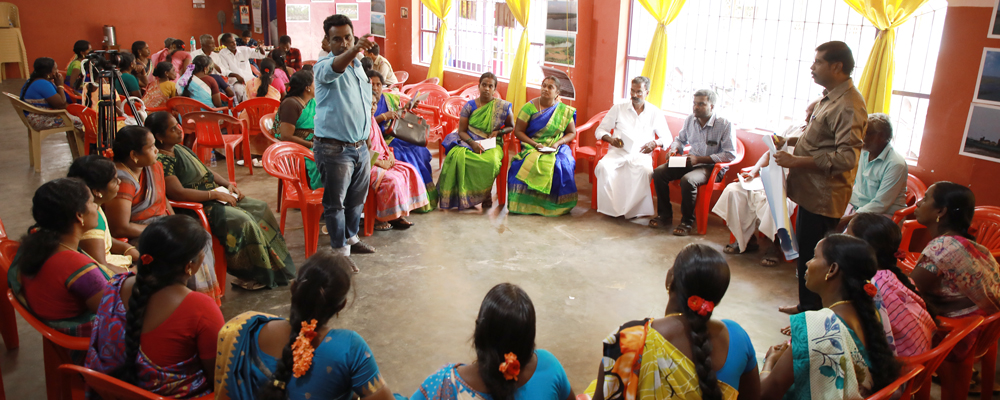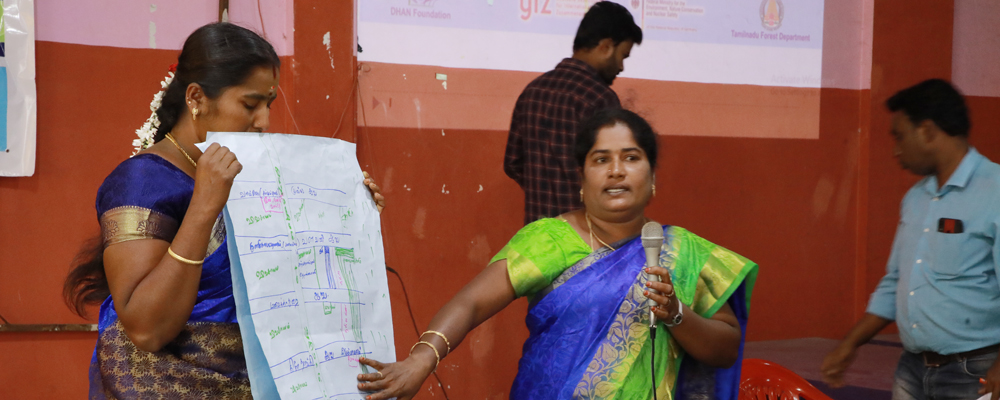On Feb 13 and 18, a stakeholder meet was happened in Muthupettai, Vedharanyam, Tamil Nadu on the subject ‘Assessment of Livelihood-Ecosystem Interdependencies for Integrated Management of “Point Calimere Ramsar Site” project. This is a study envisaged to assess the socio and economic condition of the coastal communities and also to work out the alternatives.
Ramsar Site
Ramsar site was a wetland site designated to be of international importance under the Ramsar Convention. The Convention on Wetlands, known as the Ramsar Convention, an intergovernmental environmental treaty established in 1971 by UNESCO at Iran. As of February 2020 there are 37 recognized Ramsar sites in India. Among these, Point of calimere is situated in Nagapattinam, Thiruvarur and Thanjavur district. Muthupet a town in Tiruvarur District, located between Thiruthuraipoondi and Pattukkottai, is nearly around 360km away. The town lies adjacent to the Bay of Bengal and is in the southernmost part of the Cauvery delta. This town is bounded by two rivers Korayar and Pamaniyar, to the east and the west respectively. The rivers Koriayar and Pamaniyar join near Muthupet, and there is lagoon. This lagoon covers an area of approximately 6,803.01 ha of which only 4% is occupied by well-grown mangroves. The rivers Paminiyar, Koraiyar, Kilaithankiyar Marakkakoraiyar and other tributaries of the river Cauvery flow through Muthupet and adjacent villages. At the tail end, they form a lagoon before meeting the sea.

Salient features of Point of Calimere
It is one of the last remnants of dry evergreen forests, wetlands and mangorrves. Interventions in the coastal habitats like estuaries and backwater in the low-lying areas are affecting the agriculture land. The damage caused by sea water on land needs to be assessed. Thus a need arises to study the impact of such habitats whose effect on the environment can be controlled by man and his activities. The Point of Calimere is one of the largest coastal wetlands found in the state of Tamil Nadu. It is located in the southernmost end of the Cauvery delta, extending from Adirampattinam in the west (Thanjavur District) to Point Calimere in the east (Nagapattinam District). The Muthupet mangrove wetland is a part of the Point of Calimere Ramsar site swamp.
Objectives of the study
The objectives of the study are to study the socio economic conditions of the backwater affected communities, to analyze the impact of backwater on farmlands, to study the efforts of government and other agencies in addressing the problem, and also to come out with workable alternatives for the affected communities.

Comments from experts
Mr.Raghupathi, Coastal SI explained that the area is dotted with salt pans and these hold large crustacean populations that support the wintering bird life. Pesticide residues as run off from agricultural fields and shrimp farms entered the ecosystem and many species got high concentration of DDT and HCH in their tissue. This 385-square-kilometre site comprises Panchanadikulam Wetland, Unsurveyed Salt swamp, Thalainayar Reserved Forest and Muthupet Mangroves. It is all part of the Point of Calimere Ramsar site including reserved forest.
Mr.Rajesh says that this site is a mix of salt swamps, mangroves, backwaters, mudflats, grasslands and tropical dry evergreen forests. 364 of flowering plant species have been identified in the sanctuary of which 50% are herbs and the others are climbers, shrubs and trees. About 198 of these have medicinal properties. Manilkara hexandra, locally called Palai is the dominant dry evergreen species and an important food source for fruit eating birds.

Mr.Sivanesan, Forest department says that the birds come from Siberia, Russia, Iran, and Europe. Among them the notable species of birds are the heron, egret, flamingo, the painted stork, pelican, teal and tern. The migration of these birds is an extraordinary sight that adds to the beauty of this district. The best time to visit Muthupettai is from November to February.
Mr.Balu, District councilor says that along with the deep-rooted mangrove trees the other kinds of trees like Thandal, Thillai, Narikanthal and Neermulli also grow and add to the beauty of the lagoon. This lagoon has seventy-three colourful varieties of fish. Tourists can reach the Thalaimunai Mangrove Forest in a motorboat. It is an hour’s from the Jambavanodai point near Muthupettai. A wooden pathway 162 metres long has been built for the benefit of the tourists to enjoying the mangrove forest. During the monsoon season November-January, a large number of birds migrate here from all over the World.Eighty different species of migratory birds congregate here having travelled a long distances.
Panachayat presidents from Eripurakarai, Mankanakadu, Karpaganatharkulam, Thondayankadu says that the lagoon is rich in Fish and is an ideal place for fishing and pearl harvest. It is well known for its fishing such as finfish (koduva), shrimp and crab. Major threats to the natural biodiversity and ecological balance of the sanctuary are: loss of habitat for waterbirds, soil and water salinisation by adjacent salt pans, spread of the invasive Prosopis juliflora, cattle grazing and scarcity of fresh water. Most of the Inland fishermen who are marginalized fishing community and Aqua-farmers, are practicing around the backwaters. Here livelihoods are majorly dependent on backwater.

Declarations from the stakeholders meet
- Keep the environment clean and hygiene.
- Conservation of rare, endangered and threatened species through captive breeding programmes.
- To create awareness for conservation support through outreach and education
- Plant local species of trees, shrubs and flowers to keep the ecological balance of local wetlands.
- Connect programs that help protect and restore wetlands - Our local, municipality, community groups, environmental organizations and non-government organization activities in wetland area.
- To create a network of all Zoological Parks in India for exchange of good practices.
- To seek Public Support for adoption of wild animals in captivity.
- Avoid wetlands if you are expanding home or installing a shed.
- Use paper and recycled products made from unbleached paper.
- Reduce, reuse and recycle household items and waste.
- To provide highest standard of veterinary care to all the animals in captivity and in the Rescue Centres.
- Use “living shoreline” techniques to stabilize the soil - a mix of plant roots, sand and stone instead of man-made structures.